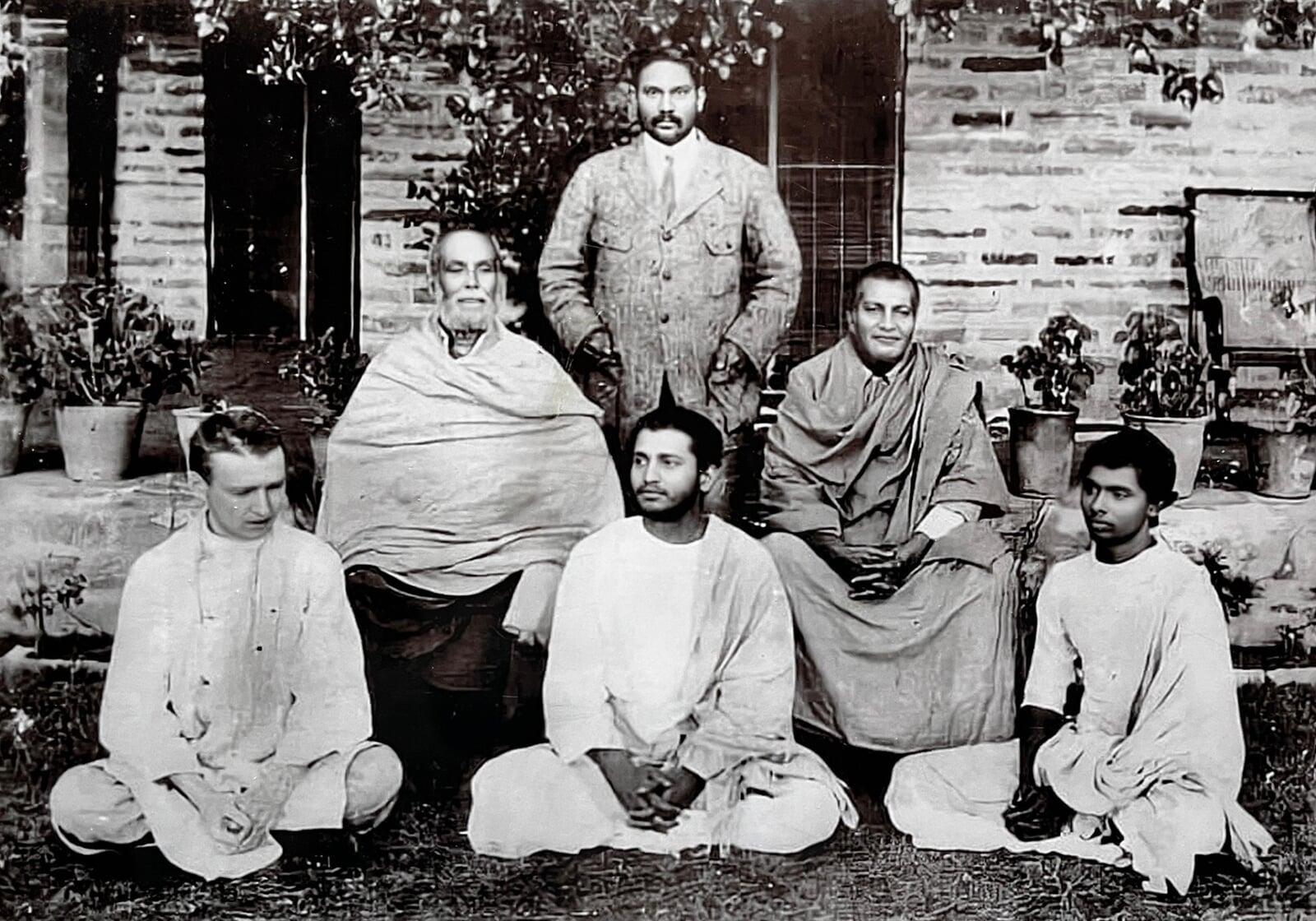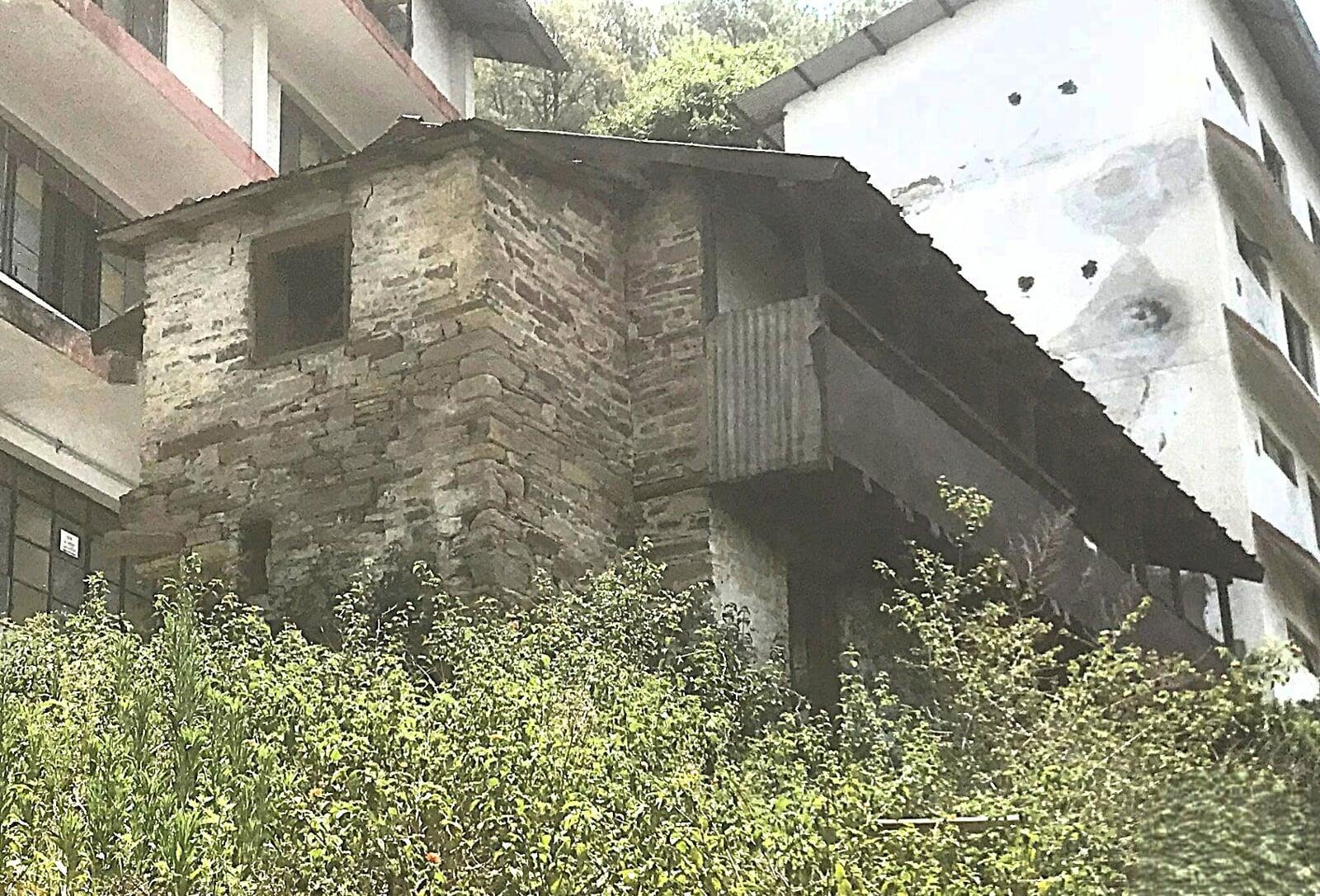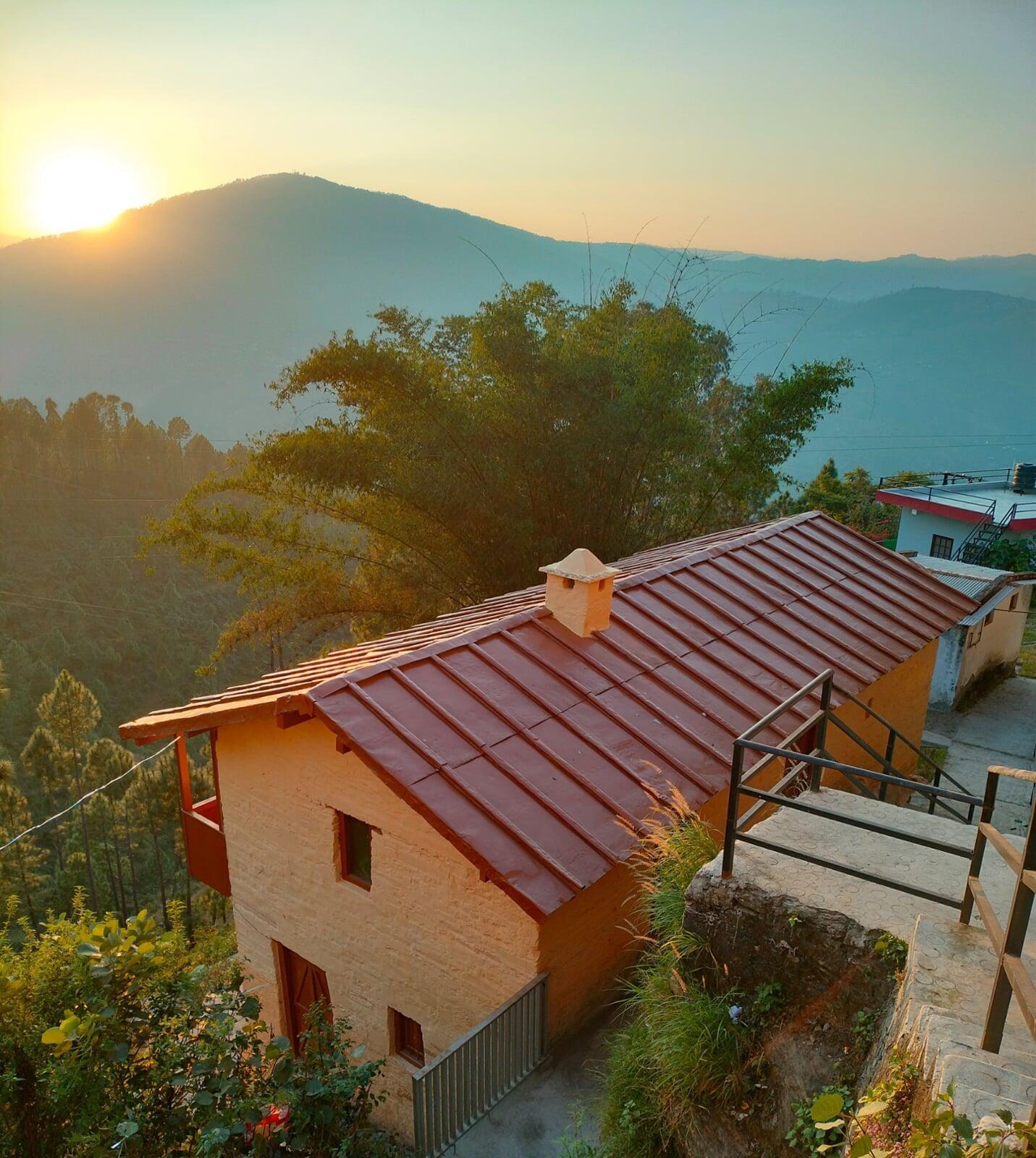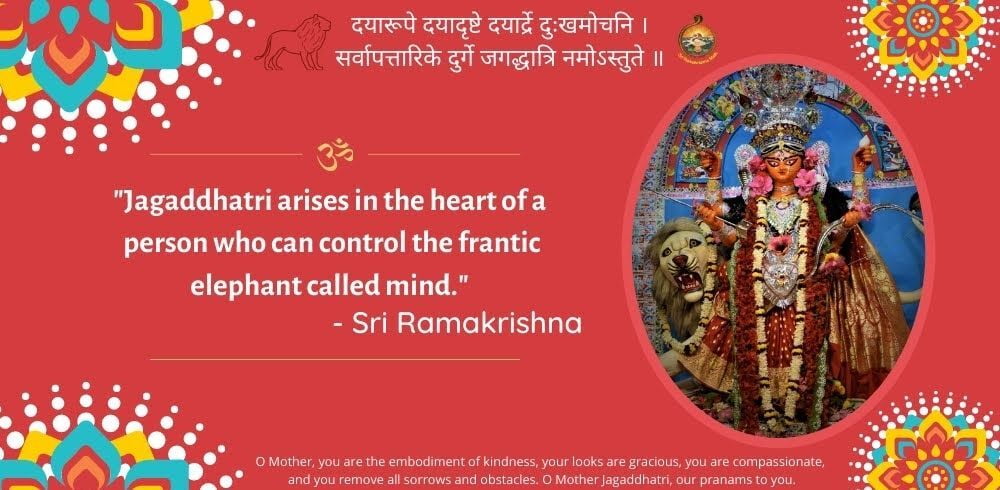FOUNDERS

Swami Vivekananda, in his reply to the welcome address on 11 May 1897, declared:
"Friends, you have been very kind to allude to an idea of mine, which is to start a centre in the Himalayas...these mountains are associated with the best memories of our race; if these Himalayas are taken away from the history of religious India, there will be very little left behind. Here, therefore, must be one of those centres, not merely of activity, but more of calmness, of meditation, and of peace; and I hope some day to realise it."
He shared this cherished dream with Swami Shivananda and Swami Turiyananda during his visits to Almora in 1897 and 1898. Nearly two decades later, in 1915, these two gurubhais came together in Almora to take the first steps toward fulfilling Swamiji’s vision.
On 22 May 1916, the Ashrama—named Ramakrishna Kutir—was formally established. Swami Turiyananda remarked: “There was no place for the Lord (Sri Ramakrishna) in Almora. By Swamiji’s grace, this place has gained such prominence. The Mission needed a place of its own; by the Lord’s grace, that has now happened. Many will benefit from this.”
SWAMI TURIYANANDA
Born as Harinath Chattopadhyay on January 3, 1863, in North Calcutta, he grew up as an orthodox brahmachari, deeply devoted to the Upanishads, the Gita, and rigorous spiritual discipline. His life changed profoundly when, as a teenager, he met Sri Ramakrishna, whose divine presence taught him that enlightenment comes not by effort alone but through surrender to divine grace.
After Sri Ramakrishna’s passing, Harinath joined the Baranagore Math in 1887 and took his vows as Swami Turiyananda. Embracing poverty, meditation, and pilgrimage, he lived for years as a wandering monk, experiencing exalted spiritual states. Though naturally inclined to solitude, he responded to Swami Vivekananda’s call to serve humanity, training young monks in deep meditation and Vedanta. Swamiji admired his purity and renunciation, calling him Vedanta “personified.”
In 1899, Turiyanandaji accompanied Swamiji to America, where—despite disliking public preaching—his mere presence deeply inspired seekers. He later founded the Shanti Ashrama in California, training disciples in disciplined Vedantic living. The intense work weakened his health, forcing him to return to India, where he lived in solitude in Vrindavan and Uttarkashi.
Turiyanandaji in Almora — the Fulfilment of Swamiji’s Dream
In 1915, due to failing health and diabetes, Turiyanandaji came to Almora with Swami Shivananda, hoping to recover in the cool, dry climate of the Himalayas. Almora was already sacred to him—he had performed tapasya here in 1905. Here, moved by Swami Vivekananda’s long-cherished wish for a Himalayan retreat, he undertook the monumental task of establishing an ashrama. From the Chilkapeta Outhouse, despite extreme weakness, he oversaw every detail of the construction—often walking steep mountain paths and bearing severe physical hardship with silent determination.
On 22 May 1916, the Ramakrishna Kutir, Almora was inaugurated—a gift of Turiyanandaji’s devotion, renunciation, and unyielding will. But this achievement came at a great personal cost: the irony was that instead of regaining health, the strenuous work completely broke down his already fragile body.
In December 1916, persuaded by his gurubhais, he left Almora for Belur Math and then Varanasi, where he spent his remaining years absorbed in God-consciousness.
In 1915, due to failing health and diabetes, Turiyanandaji came to Almora with Swami Shivananda, hoping to recover in the cool, dry climate of the Himalayas. Almora was already sacred to him—he had performed tapasya here in 1905. Here, moved by Swami Vivekananda’s long-cherished wish for a Himalayan retreat, he undertook the monumental task of establishing an ashrama. From the Chilkapeta Outhouse, despite extreme weakness, he oversaw every detail of the construction—often walking steep mountain paths and bearing severe physical hardship with silent determination.
On 22 May 1916, the Ramakrishna Kutir, Almora was inaugurated—a gift of Turiyanandaji’s devotion, renunciation, and unyielding will. But this achievement came at a great personal cost: the irony was that instead of regaining health, the strenuous work completely broke down his already fragile body.
In December 1916, persuaded by his gurubhais, he left Almora for Belur Math and then Varanasi, where he spent his remaining years absorbed in God-consciousness.
Mahasamadhi
On July 21, 1922, Swami Turiyananda attained Mahasamadhi in Varanasi, declaring the highest realization: “God is Truth, the world is also Truth; everything is Truth.”he Ramakrishna Order.
On July 21, 1922, Swami Turiyananda attained Mahasamadhi in Varanasi, declaring the highest realization: “God is Truth, the world is also Truth; everything is Truth.”he Ramakrishna Order.

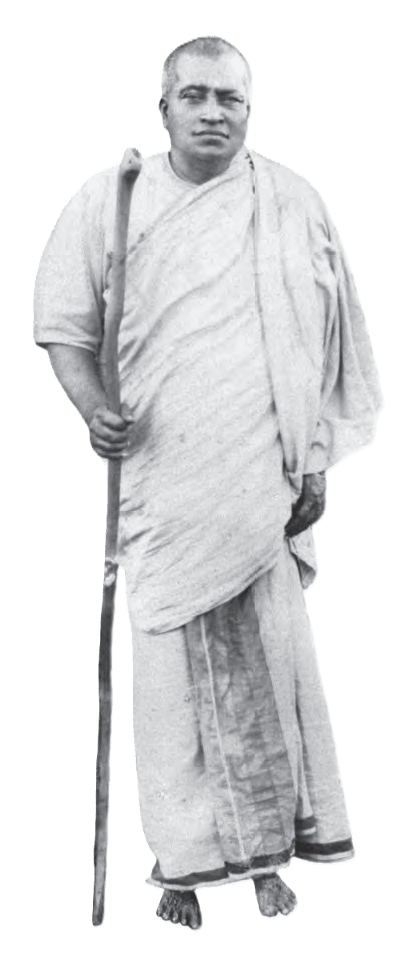
SWAMI SHIVANANDA
Born as Taraknath Ghoshal on December 16, 1854, in Barasat near Kolkata, Swami Shivananda grew up in a devout Brahmin family shaped by his father’s Tantrik practices. From childhood he was drawn to meditation and longed to understand the mysteries of spiritual life. A chance conversation about samadhi led him to seek Sri Ramakrishna, whom he first met in 1882. The Master initiated him and guided him through profound spiritual experiences, recognizing his sincerity and purity.
Tarak was the first of Sri Ramakrishna’s disciples to renounce the world. After the Master’s passing, he joined the Baranagore Math, where Swami Vivekananda named him Shivananda for his devotion to Shiva and his calm, detached nature. For many years he lived the life of a wandering monk, visiting Kedarnath, Badrinath, Uttarkashi, and other sacred places.
Swami Shivananda and Almora
Almora held a special place in Swami Shivananda’s spiritual life. He visited the town five times—in 1889, 1893, 1897, 1913, and finally in 1915—practicing intense sadhana in places such as the Patal Devi Mandir, Thompson House, and later the Chilkapeta House.
During his 1893 visit, he met E. T. Sturdy, who later became instrumental in organizing Swami Vivekananda’s work in London. When Swamiji returned to India in 1897, Shivanandaji accompanied him to Almora, where Swamiji shared his vision of establishing a spiritual retreat in the Himalayas.
This dream was finally realized during Shivanandaji’s last visit in 1915, when he and Swami Turiyananda worked together—despite Turiyanandaji’s failing health—to establish the Ramakrishna Kutir, Almora, inaugurated on 22 May 1916. Shivanandaji supervised the work with his characteristic quiet strength and devotion, making Almora a sacred chapter in his life.
Later Years
At Swamiji’s request, he later preached in Ceylon, helped establish the Advaita Ashrama at Benares (1902), and became renowned for his rigorous discipline and deep spiritual practice. After Swami Brahmananda’s passing in 1922, he became the President of the Ramakrishna Math and Mission, guiding monks with a blend of strictness, fatherly affection, and profound spiritual insight.
Swami Shivananda passed away on 20 February 1934. He was revered for his simplicity, purity, and boundless love—qualities that earned him the title Mahapurush Maharaj and made him beloved across the Ramakrishna Order.
